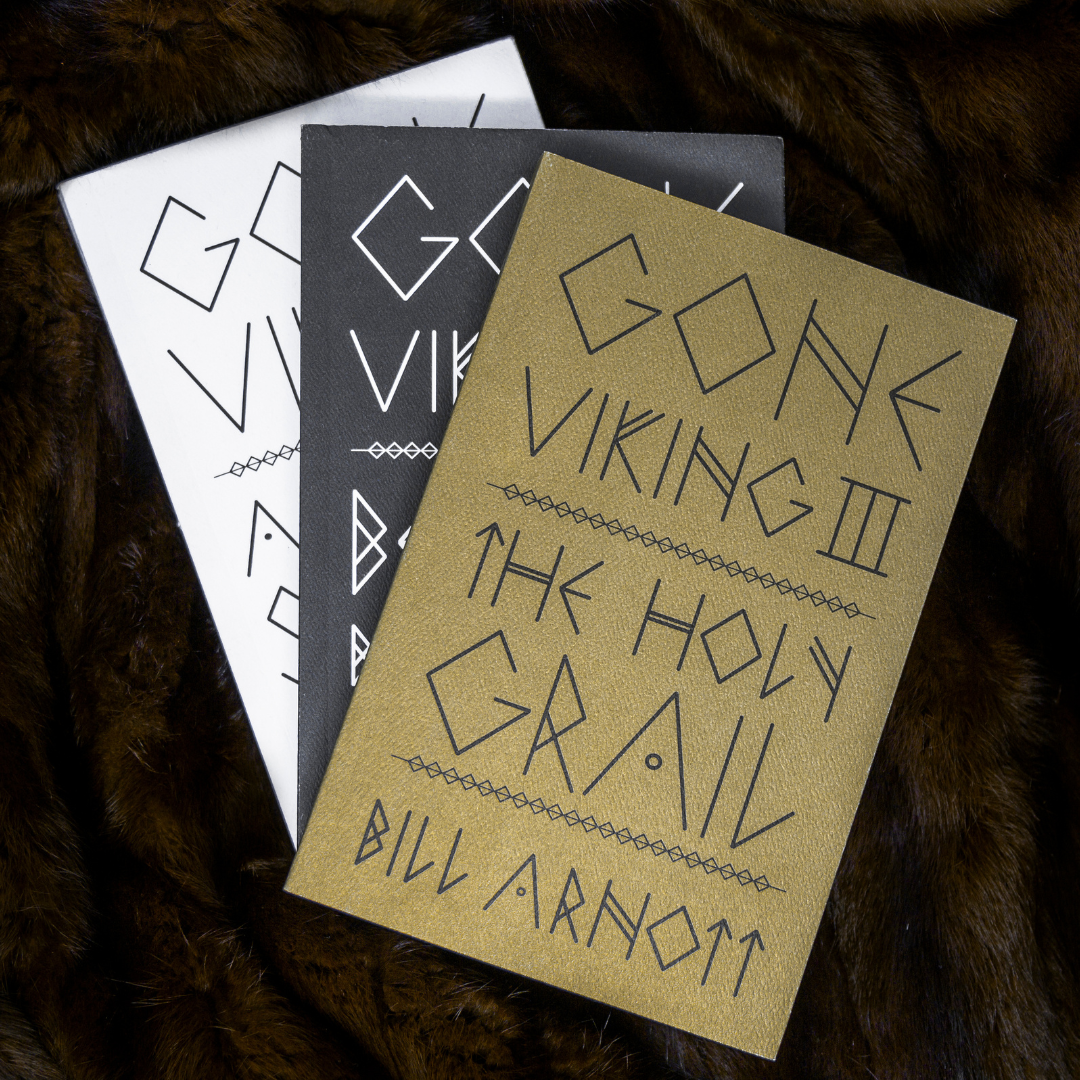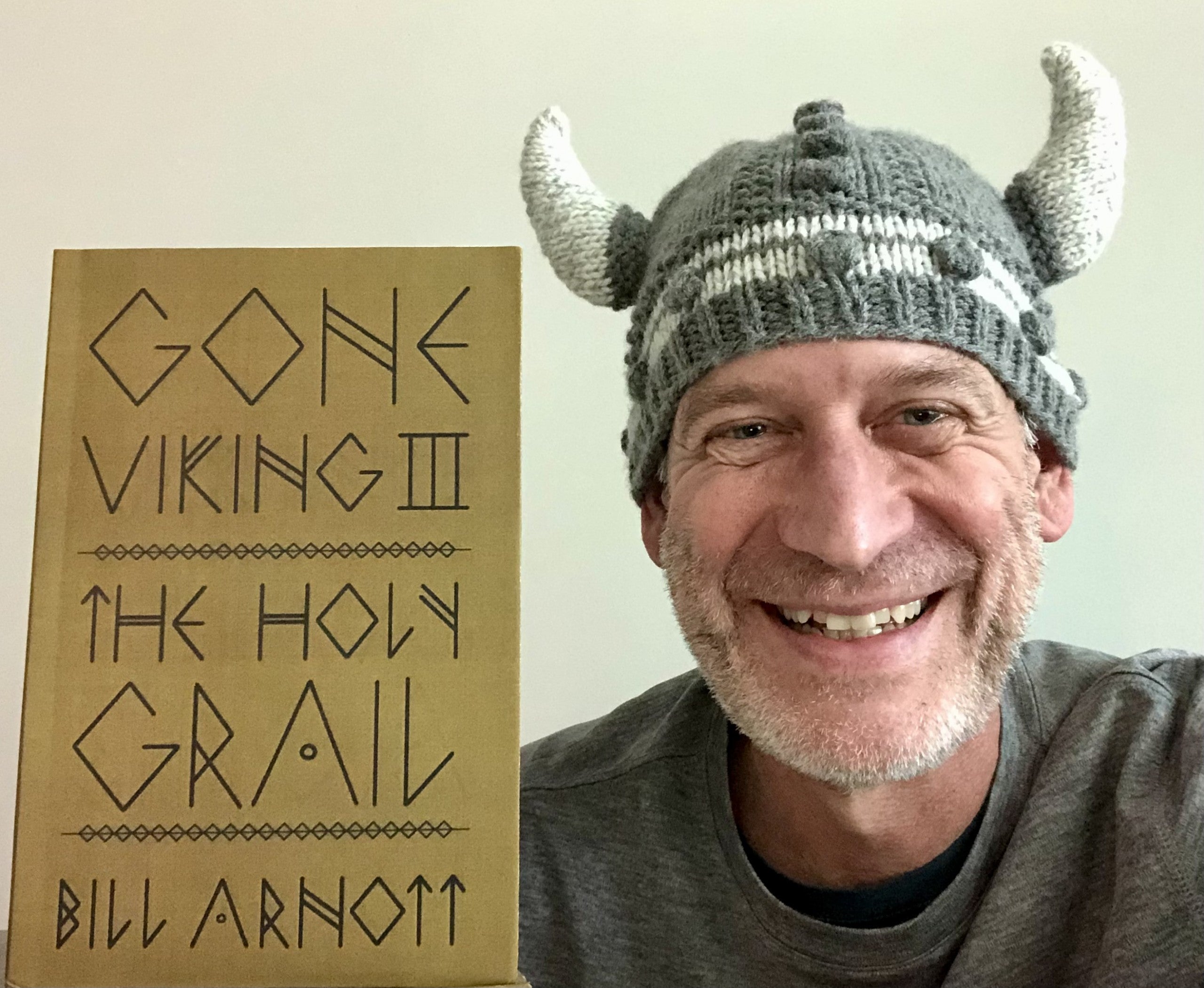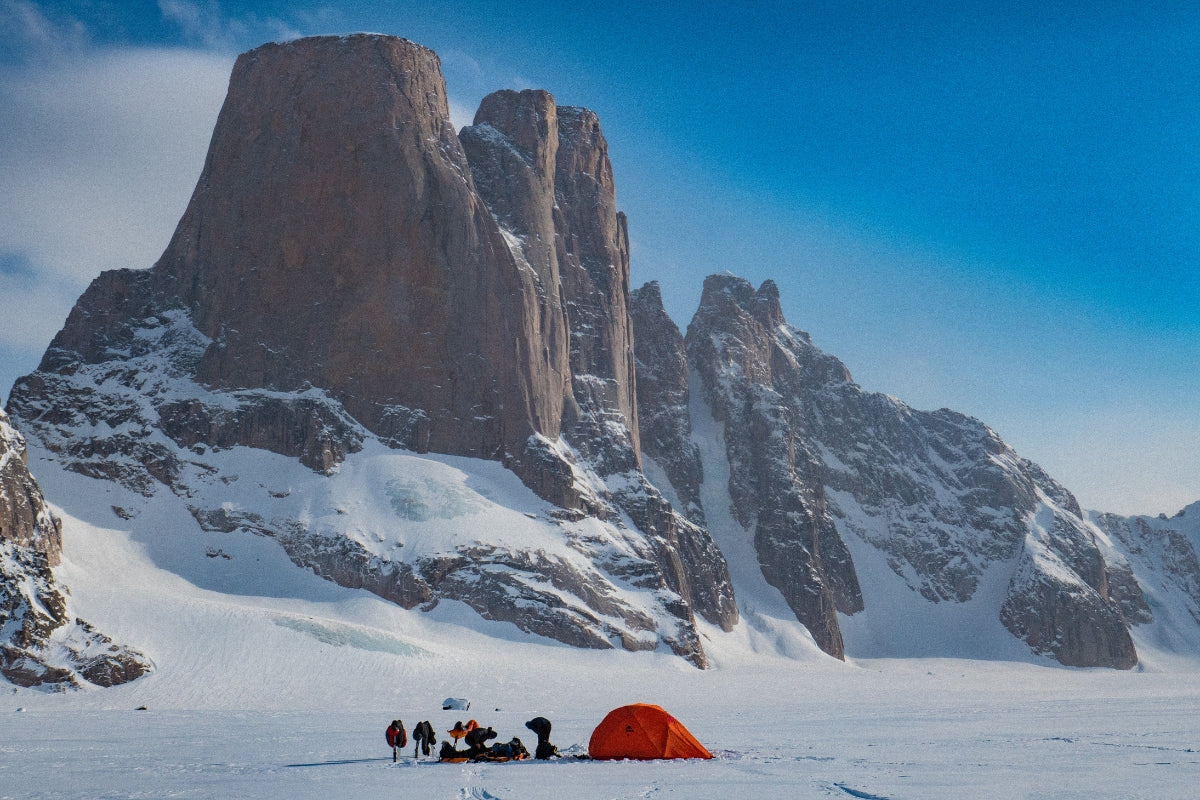Bill Arnott’s Gone Viking Returns to Where It Began

New Readers, New Maps, and a New Look at the Epic RMB Series

"Give me an atlas over a guidebook any day. There is no more poetic book in the world."
When I first read this Judith Schalansky quote, I knew this was a traveller, a writer I could trust. The title of her book, Atlas of Remote Islands: Fifty Islands I Have Never Set Foot On and Never Will, introduces us to her sense of adventure, and humour. Published in Germany in 2009 and reprinted in English the following year, the new book won awards. Design awards. Recognized not only for content but physical beauty as well. Which I learned after joining the author for her fifty adventures, imagined yet viscerally real.
This came to mind as I ventured out on my actual voyage, crossing the Atlantic and Arctic to write Gone Viking: A Travel Saga, RMB’s award-winning bestseller that’s now five years old. It was at the UK’s Holy Island of Lindisfarne the Viking Age began, so that’s where I went to kickoff a decade of exploration and subsequent Gone Viking books.
Magically, a reader reached out, a mapmaker from Switzerland, to say how much he’d enjoyed accompanying me on that Gone Viking journey, reading my travelogue in the same way that I’d read the Atlas book. And this artisan, who’s name is Simeon Netchev, created a map, illuminated cartography to pair with my Gone Viking trek to that northerly isle.
Netchev’s art incorporates the same history I used in my research, drawing from Scandinavian Sagas and the Anglo-Saxon Chronicle, which includes this famous Viking Age quote, referring to Lindisfarne in the year 793. “Here were dreadful forewarnings come over the land of Northumbria, and woefully terrified the people: these were amazing sheets of lightning and whirlwinds, and fiery dragons were seen flying in the sky. A great famine soon followed these signs, and shortly after in the same year, on the sixth day before the ides of January, the woeful inroads of heathen men destroyed God’s church in Lindisfarne island by fierce robbery and slaughter.” History here clearly boldened by fictional flair. So who ever said monks couldn’t craft a good story? Despite embellishment, we know most of this happened. Archaeological evidence backs it up. Not the dragons, mind you, but the rest of it.
Following my own Viking odyssey, the first one, which lasted eight years and crossed half the planet, I’ve read a great many Saga and Chronicle passages. I even perused an actual Saga, an 800-year-old text, lit from above in a building of low wooden beams. This was in Reykjavik, a subterranean space I had to myself at that time, a frigid weekday in June, the room silent and still. Where I imagined Viking tales being shared by a fire-warmed hearth, like most history, a blend of story and art.
But back to our real-life map, from when I went to the UK’s Holy Isle, a day of low haze, spindrift swirling in breeze. I could see, at least clearly imagine, a herd of dragon-ship prows emerging from sea-salted haar. Maybe those were the dragons the monks wrote of. The land still looks as it did, I suspect, when those very first Vikings arrived at what’s now Great Britain. Likely Danes, having sailed and rowed west to find cultivatable land, emigration potential, resources of timber and treasure. Subsequently, researchers have found evidence indicating earlier Danish landings around Britain but for most historians, England’s Viking Age began in 793 at Lindisfarne.
I was one of a dozen explorers being shuttled from Edinburgh to England’s northeastern corner, where the Holy Isle sits on the Northumbrian coast, tethered to the mainland by a tidal causeway. Accessibility is by coach or by car, twice daily. Otherwise, a small ferry serves the island. At low tide, trekkers can make the crossing by way of a long sandy slog, the walk a watery pilgrimage.
Our driver was Paul, a Scotsman who longed for a stage. Unprompted, he bellowed Sean Connery lines, doing the voice, then imparted us with politicized history lessons. Maybe lessons is too strong a word. Opinions, perhaps. Or rants.
Driving into England, he addressed us with a query. “Can you smell it?” he asked. Then made us wait, a theatrical pause, before answering his own question with disgust. “… English.” Leaving me with jottings both historical and anecdotal, much like the Sagas and Chronicle, as I scribbled Paul’s words in my journal.
Our vehicle hugged the coast, the isle somewhere ahead, as we drove through bright fields of bluebells, Celtic green grass, and thick rhododendron in purple. Past Bass Rock, a slab of igneous stone, now a seabird sanctuary, the shore a cacophonous swirl of white feathers. Pastures rolled by with fences of drystone, some five-thousand years old. The road bisected low hills and smooth valleys. Paul claimed each dip in the land was the same but named differently on either side of the border: glens in Scotland, dales in England. Which I’m sure is untrue.
Finally, the isle took shape, emerging through fog, as our bus reached the causeway, timed with the tide to tackle the chop of the narrows. Sure enough, a lone pilgrim was sloshing through surf, walking the seabed to get to the island. Gulls hung in flight, borrowing slivers of sky, while wild poppies dotted the sides of the road in red dollops that resembled blood spatter.
Another Paul, Paul Theroux, described his arrival to this spot, as he too traipsed his way through the country. “On Holy Island I felt a sense of being on board a ship that was moored on a long hawser, occasionally drifting to sea and occasionally bumping the shore.” Precisely how I felt there as well.
Having navigated the causeway, we parked and then scattered. Crunching through gravel and sand, I imagined I was walking the very pages of the Chronicle, maybe a Saga as well, an evocative trail paralleling the shore. Then, there it was! A crenelated snapshot of history, hearsay and heresy too. Not only the landmass but its priory and rock-topping fort, blurred into one smear of earth and fortification, the whole plunked into place like a chess-piece. At a glance I felt I was gazing at Stirling or Edinburgh Castle, but the surrounds were entirely different. Sea in the air, literally, as I breathed in a mixture of saline and oxygen, the ocean pervading each lungful.
I shuffled in a slow pirouette; Lindisfarne Castle directly ahead, Lindisfarne Priory behind. To the left and the right, open sea. Leaving me slightly awash, a tug of the tide, imagery of longships with dragon-head prows gnashed through the mist, the creak of oars being heaved, maybe a baritone battle-song. I imagined the clatter of weapons, adrenaline musk, bloodlust and fear. What historian Neil Oliver describes as “Viking Age Ground Zero.” An X on a map that triggered an Age, and with it the telling of tales, scribes put to work, fresh velum stretched, illuminated and bound. History, artwork and artifact, as palpable as anything I would experience in my globe spanning Viking-themed quests.
Time drifted, dissolved, and I spent a long while with the castle before wandering the priory grounds, choosing to admire from a distance, not wanting to disturb the tableau, as though getting too close might jeopardize authenticity. I needed to soak-in this palpable vista, three-dimensional landscape and portrait, without risk of displacement. This was what I wanted to see, in the manner I wanted to see it. A window onto a place, a time, and a feeling. No speculation or embellishment. Just truth on a map, what I felt in that moment. Now captured not only in three RMB Gone Viking books, but a remarkable atlas as well, created by another reader and friend from our ever expanding #GoneVikingCommunity, an artisan sharing their craft with the world.

Bill Arnott is the bestselling author of the award-winning Gone Viking travelogues, as well as A Season on Vancouver Island and the forthcoming Season sequels: A Season in the Okanagan, and A Festive Season on Vancouver Island, from RMB | Rocky Mountain Books. Recipient of a Fellowship at London’s Royal Geographical Society for his expeditions, Bill’s a frequent guest speaker and contributor to universities, TV, radio, podcasts and magazines. When not trekking with a small pack and journal, Bill can be found on Canada’s west coast, where he lives near the sea on Musqueam, Squamish, and Tsleil-Waututh land.



Comments